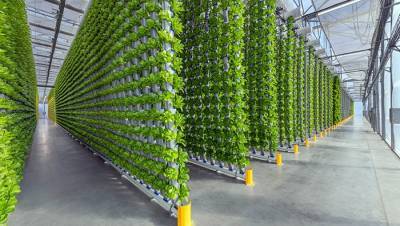MUMBAI, 9 October 2023: In recent years, a groundbreaking innovation in agriculture has been quietly taking root, offering a sustainable and efficient solution to address the growing global demand for fresh produce. Vertical farming, a cutting-edge farming technique that leverages technology to cultivate crops in vertically stacked layers, is poised to revolutionize the way we grow and consume food.
The vertical farming advantage
Traditional agriculture, with its sprawling fields and dependence on favorable weather conditions, faces numerous challenges in the 21st century. Factors such as climate change, land scarcity, and the need for reduced water consumption are pushing the boundaries of conventional farming. This is where vertical farming steps in, offering several key advantages:
-
Year-Round Production: Vertical farms can operate year-round, providing a consistent supply of fresh produce regardless of seasonal limitations. This is achieved through controlled indoor environments with artificial lighting, temperature, and humidity control.
-
Space Efficiency: Vertical farms maximize land use by stacking crops vertically. A small urban facility can produce yields equivalent to acres of traditional farmland.
-
Reduced Water Usage: Closed-loop hydroponic and aeroponic systems in vertical farming use significantly less water than conventional soil-based farming, making it a more sustainable option.
-
Pesticide Reduction: Controlled environments reduce the need for pesticides, making vertical farming a more eco-friendly and healthier option.
Technological innovation in vertical farming
The success of vertical farming relies heavily on technological advancements. Here are some key technologies that power vertical farms:
-
LED Lighting: Energy-efficient LED lights provide the specific light spectrum needed for plant growth. These lights can be adjusted to mimic natural sunlight and optimize photosynthesis.
-
Automation and Robotics: Vertical farms often employ automation and robotics for tasks such as planting, harvesting, and monitoring crop health. This reduces labor costs and ensures precision.
-
Data Analytics: Sensors and data analytics are used to monitor and adjust environmental conditions in real-time. This data-driven approach maximizes crop yields and minimizes resource wastage.
Urban agriculture and local produce
One of the most exciting aspects of vertical farming is its potential to bring agriculture back to urban centers. Vertical farms can be built in or near cities, reducing the need for long-distance transportation of produce. This not only reduces the carbon footprint associated with food transportation but also ensures fresher and more nutritious food for urban populations.
Challenges and future prospects
While vertical farming holds immense promise, it also faces challenges. High initial setup costs, energy consumption, and the need for skilled labor are among the hurdles to overcome. Additionally, scaling up vertical farming to meet the demands of a growing global population remains a complex task.
Nevertheless, ongoing research and investment in vertical farming technologies are gradually addressing these challenges. With continued innovation, vertical farming has the potential to transform agriculture into a more sustainable, efficient, and localized industry.
Conclusion
Vertical farming represents a significant paradigm shift in agriculture. It offers a glimpse into a future where fresh, locally grown produce is available year-round in urban areas, reducing the environmental impact of food production and increasing food security. As the technology advances and becomes more accessible, vertical farming is poised to play a vital role in feeding our world sustainably.
In a world where the demand for food is ever-increasing and environmental concerns are at the forefront, vertical farming emerges as a beacon of hope and innovation in the field of agriculture.
By Jagdish Kumar, Editor, AgriTimes.co.in
Image Copyright: Wade Griffith 2022




















